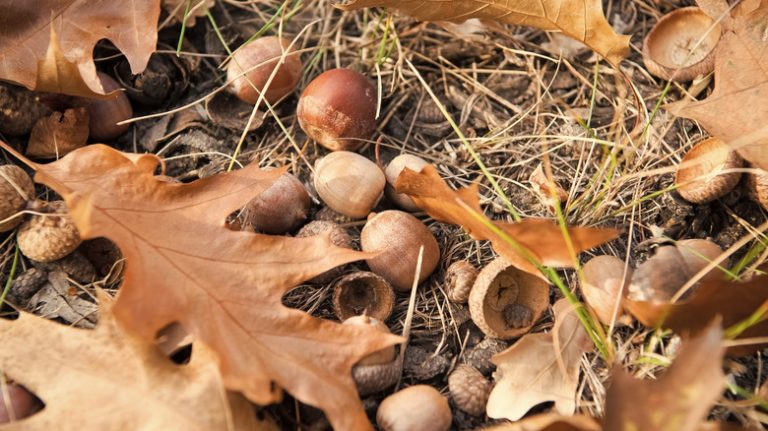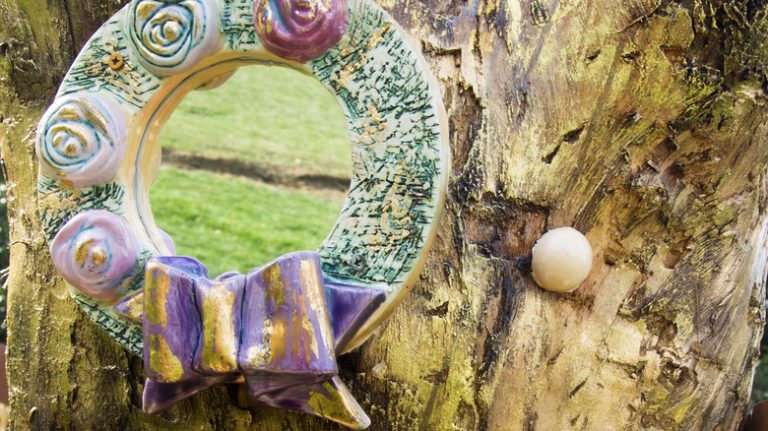If you have a yard and want to add some shade and beautiful colors to it, planting a maple tree is an excellent choice. There are many varieties of maple trees that you can choose from, each with its own unique characteristics and beauty. In this article, we will explore the six most common types of maple trees, their differences, and how to identify them.
One of the most common types of maple trees is the Japanese maple (Acer palmatum). These trees are known for their brilliant colors in the fall and their delicate leaf structure. The Japanese maple is also a favorite choice for bonsai enthusiasts due to its small size and intricate branch structure.
Another popular type of maple tree is the Norway maple (Acer platanoides). These trees are easily distinguishable by their large, dark green leaves and thick, sturdy trunks. Norway maple trees are commonly found in the United States and are often used for street planting due to their hardiness and fast-growing nature.
The silver maple (Acer saccharinum) is sometimes mistaken for the Norway maple due to their similar leaf shape and appearance. However, the silver maple can be identified by its silver underside and the thicker, more deeply cut leaflets compared to the Norway maple. It is an excellent choice for homeowners who want a fast-growing tree with a tall and slender structure.
If you’re looking for a maple tree with beautiful, deeply lobed leaves, the red maple (Acer rubrum) is a perfect choice. The red maple is known for its vibrant, red foliage in the fall and the bright red fruits that appear in the spring. These trees have a moderate growth rate and typically reach a height of 40 to 60 feet.
The boxelder maple (Acer negundo) is another commonly found tree in North America. Although it is technically a maple tree, it has significant differences in appearance and leaf structure compared to other types of maple trees. The boxelder maple has compound leaves with three to five leaflets, which give it a fern-like appearance. It also produces unique seeds with wings, which are an important food source for birds and other wildlife.
The paperbark maple (Acer griseum) is a smaller maple tree that is highly desired for its stunning exfoliating bark. The bark peels off in thin, soft layers, revealing a beautiful cinnamon-colored inner layer. The paperbark maple is an excellent option for smaller yards and it is one of the slowest growing maple trees.
In summary, when choosing a maple tree for your yard, it’s important to consider factors such as the desired height, hardiness, and leaf structure. Each type of maple tree has its own unique characteristics and beauty, so take the time to explore the different varieties and find the one that suits your preferences.
Maple Trees
Maple trees are a commonly found and popular type of tree in the United States, especially in the northeastern and midwestern regions. They are known for their beautiful and vibrant foliage, which varies from season to season. Maple trees belong to the Acer genus and are part of the Sapindaceae family.
There are six types of maple trees that are particularly popular and can be found in parks, yards, and streets across the country. These types include the sugar maple, red maple, silver maple, Japanese maple, paperbark maple, and boxelder maple. While these maple trees may look alike at first glance, there are distinct differences in their characteristics and growth habits.
The sugar maple (Acer saccharum) is known for its brilliant fall colors and its ability to produce syrup. It is the same tree that adorns the Canadian flag and is often seen in the northeastern states. This tree can grow up to 100 feet in height and has a moderate growth rate.
Red maples (Acer rubrum) are also common in the United States and can be found in various types of soil. They are known for their stunning red foliage and are usually taller than sugar maples, reaching heights of up to 120 feet. Red maples are fast-growing trees.
Silver maples (Acer saccharinum) have a fast growth rate and can reach heights between 50 and 80 feet. They are commonly found near bodies of water and have distinct silver leaves that shimmer in the wind. These trees are easy to grow and provide excellent shade.
Japanese maples (Acer palmatum) are smaller in size compared to other maple trees, usually reaching heights of 15 to 25 feet. They have delicate leaves that come in various colors and shapes, making them a favorite among gardeners. Japanese maples are known for their slow growth rate and their ability to add an aesthetic touch to any landscape.
Paperbark maples (Acer griseum) have a unique and attractive cinnamon-colored bark that peels in thin layers, resembling paper. They are moderate in size, growing up to 30 feet tall, and are commonly found in gardens and parks. Paperbark maples have a moderate growth rate and emit a milky sap when damaged.
Boxelder maples (Acer negundo) are commonly found in the Midwest and can tolerate poor soil conditions. They are fast-growing trees and can reach heights of up to 50 feet. Boxelder maples have compound leaves with three to five leaflets and are often considered a weed tree due to their ability to colonize quickly.
Overall, maple trees are a diverse group of trees that offer beauty, shade, and structure to any landscape. Whether you’re planting them in your yard or enjoying their view in parks, maple trees are definitely worth considering.
Norway Maple
The Norway Maple is a popular street tree in the United States, mainly because it is hardy and can tolerate different types of soil. These maples are fast growers and can reach heights of up to 50 feet. They have dark gray-brown bark and large, deeply lobed leaves with a bright green color in the summer and a brilliant yellow in the fall.
One way to identify a Norway Maple is by looking at the base of its trunk. The trunk tends to be thicker and more deeply furrowed than other maple varieties. Norway maples have small, black fruits that are borne between April and June. Unlike some other maples, the leaves of the Norway Maple emit a sweetgum-like odor when crushed.
If you’re looking for a shade tree for your property, the Norway Maple is definitely a good candidate. It provides a dense canopy that blocks out sunlight and helps keep your home cool in the summer. These maples are easy-to-grow and can adapt to a wide range of soil conditions.
Sugar Maple
The Sugar Maple (Acer saccharum) is one of the most popular and desirable types of maple trees in the United States. It is also the state tree of New York, Vermont, West Virginia, and Wisconsin. Sugar maples are known for their vibrant fall colors, ranging from deep reds to brilliant oranges and yellows.
The leaves of the sugar maple are five-lobed and have a length between 3 and 5 inches. The leaflets are deeply notched and have pale shades on the undersides. The bark of the sugar maple is hard and gray, sometimes forming vertical grooves as the tree ages.
Sugar maples are important for their sap, which is used to produce maple syrup. Insects, such as aphids, can sometimes be a problem for sugar maple trees. They may also be susceptible to certain diseases like verticillium wilt. However, sugar maples are generally quite hardy and can tolerate a variety of climates and soil conditions.
In urban areas like New York City, sugar maples are often planted along streets and in parks due to their beauty and ability to provide shade. They are known for their strong branch structure, making them less likely to break during winter storms.
If you’re looking to add a sugar maple to your yard or property, it’s important to consider its growth requirements. Sugar maples prefer well-draining soil and should be planted at least 10 to 15 feet apart to allow for proper root development. They are slow to medium growers and can take several decades to reach their full height.
The sugar maple is sometimes confused with the Norway maple due to their similar look. However, there are a few key differences. The Norway maple has larger leaves with less pronounced lobes and can tolerate a wider range of soil conditions. The easiest way to differentiate them is by their seeds, as sugar maple seeds have wings while Norway maple seeds do not.
In conclusion, sugar maples are a popular and important type of maple tree in the United States. Their vibrant fall colors, hardy nature, and ability to produce maple syrup make them highly desirable. If you’re lucky enough to have a sugar maple tree on your property, take the time to explore its beauty and appreciate all that it has to offer.
Silver Maple
The Silver Maple (Acer saccharinum) is one of the most common types of maples that you can find. These trees have long, silver-gray leaves that emit a silvery sheen when they catch the sunlight. They are different from other maples in terms of how they look and their important features.
1. Foliage: The foliage of Silver Maples is lighter and thinner compared to other maples. The leaves are deeply lobed and have a silvery-gray color on one side and a green color on the other. This makes them stand out among other trees in your neighborhood.
2. Branches: Silver Maples have thicker branches compared to other maples. You can easily spot a broken or damaged branch if it’s a Silver Maple. The width between two branches is an important identifying feature.
3. Height: Silver Maples are tall trees. They can grow to be as tall as 80 feet or more, definitely taller than other maples. This makes them a popular choice for street view and parks.
4. Wood: The wood of Silver Maples is light and has shades of white and gray-brown. It is not as desirable as the wood of other maples, such as the Red Maple or Sugar Maple. However, it can still be used for certain purposes.
5. Soil: Silver Maples prefer moist and well-drained soils. They can tolerate different soil types, ranging from acidic to slightly alkaline. They are also known to grow in wet areas, such as along streams and rivers.
6. Other Features: Silver Maples have small and yellowish-green flowers that bloom in April or early spring. The flowers are not as showy as those of other maples, such as the Red Maple or the Sugar Maple. The tree also produces seeds in the form of winged fruits, similar to those of other maples.
Overall, the Silver Maple is an excellent shade tree to have in your yard or in a park. Its silver-gray foliage adds a focal point to any landscape, and its fast growth rate makes it a popular choice for those who want quick results. However, it is important to note that the Silver Maple is susceptible to certain diseases, such as verticillium wilt, which can affect its overall health. If you find Silver Maples in your area, be sure to take good care of them, as they are an important part of the tree diversity in our world.



